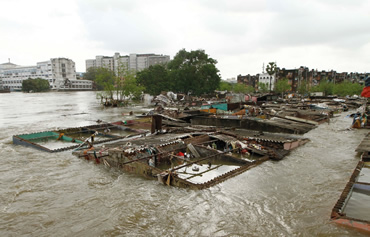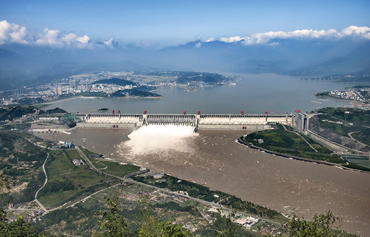Part 2 - Mapping hotspots
Water pollution and human health
Dirty water: a threat to human health
Lack of access to clean drinking water and lack of sanitation are two of the major causes of human illness and mortality. In combination, their impact leads to almost 800,000 human deaths, annually, in low- and middle-income countries. This is far more than the number of annual casualties from flooding, drought, or violent conflict.
In Africa, diseases such as diarrhoea are mainly caused by contaminated drinking water and poor sanitation, and are responsible for over 10% of infant mortality, which is 25 times higher than in developed countries.
Far more people die from unsafe water than from other natural disasters and conflicts
Average number of deaths per year, 1980-2015
Source: CRED, WHO
Lack of access to clean drinking water and lack of sanitation are two of the major causes of human illness and mortality. In combination, their impact leads to almost 800,000 human deaths, annually, in low- and middle-income countries. This is far more than the number of annual casualties from flooding, drought, or violent conflict.
Present situation, safe drinking water and basic sanitation
Percentage of population
Source: WHO, Unicef
One in eight people in the world have no access to clean drinking water and almost one in three lack basic sanitation facilities. Although access to clean drinking water and sanitation facilities has improved over the last decades, large differences remain between world regions. For instance, although since 1990, 2.6 billion people have gained access to clean drinking water, today 660 million people are still without, especially in Sub-Saharan Africa.
Access to drinking water and sanitation improves
By 2050, many more people are projected to have improved access to clean drinking water and sanitation.
Substantial part of population in Africa and Asia not connected to sewerage and wastewater treatment by 2050
Number of people (x 1,000)
Source: PBL
Only in Sub-Saharan Africa and South and East Asia, a substantial part of the population is projected to still be without adequate sanitation. The development of sanitation and wastewater treatment systems cannot keep up with the rapid increase in population and urbanisation.
Nutrient emissions on the increase
The emission of nutrients (nitrogen and phosphorus) to rivers, lakes and coastal seas has a negative impact on water quality and ecological quality and may affect economic functions, such as aquaculture, fisheries and tourism.
Increase in nutrient emissions to surface water 2010–2050
From agriculture and households, in kg/km2

Source: PBL
If sewerage systems are not combined with adequate wastewater treatment systems, the loading of nutrients and polluting substances to surface waters will increase.
The rapidly growing cities in the developing countries are projected to become major sources of nutrient emissions.
Investments in wastewater treatment are required to reduce the additional emissions resulting from the connection of 3 billion people to the sewerage systems. There are three categories of wastewater treatment systems: primary treatment (average nutrient removal of 10%), secondary treatment (40%) and tertiary treatment (85%).
Without advanced wastewater treatment no reduction urban nutrient emissions
In billion kg

Source: PBL
Under a business-as-usual scenario, without investments in wastewater treatment, the trend of strongly increasing urban nutrient emissions will continue in future decades.
Investments in secondary wastewater treatment are not sufficient to bend this trend.
Nutrient emissions are projected to decline only through the installation of tertiary treatment systems.







